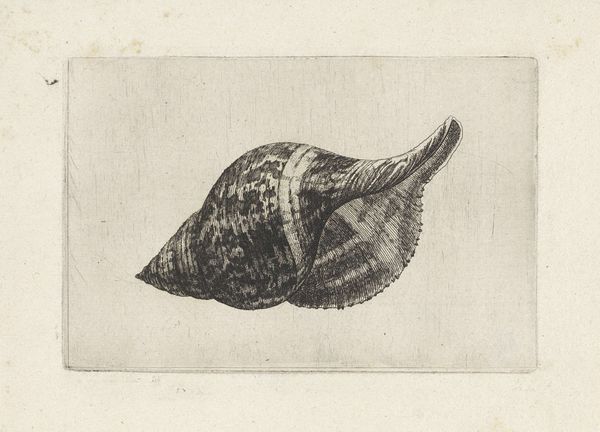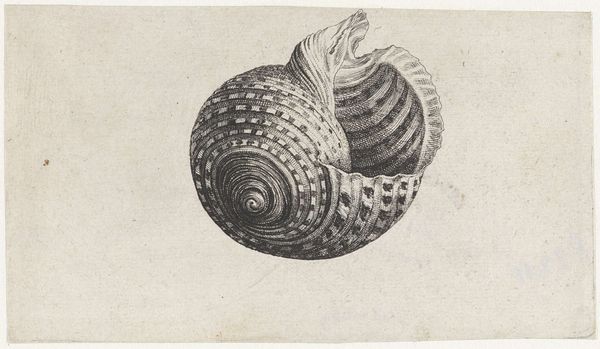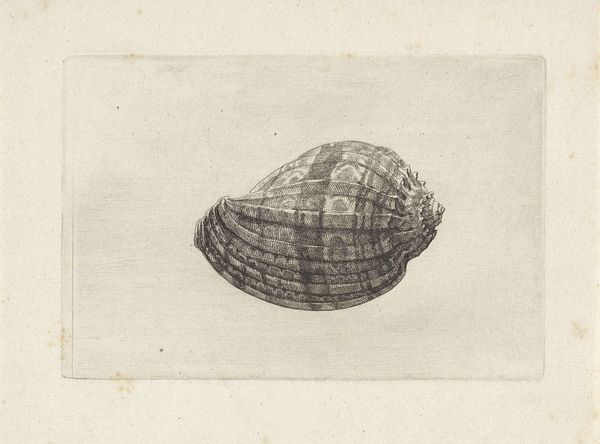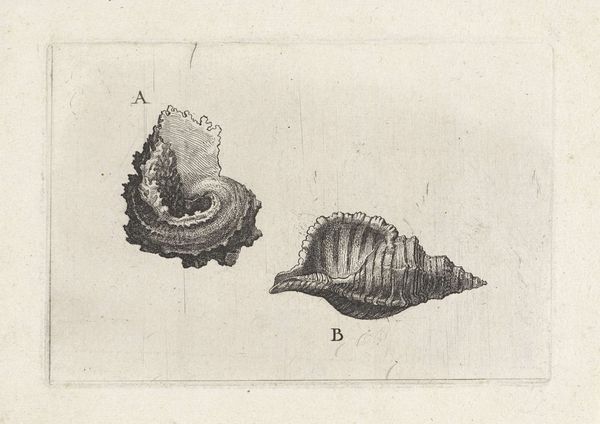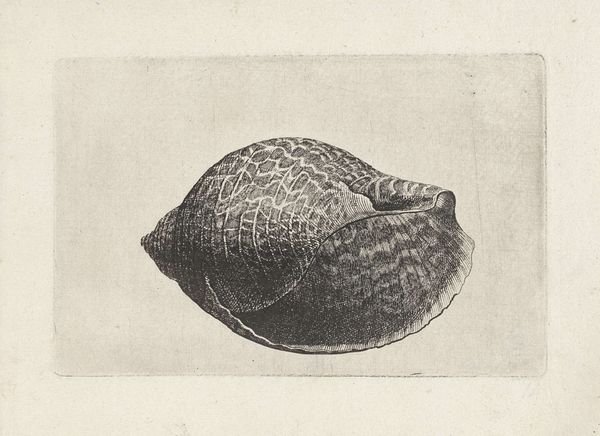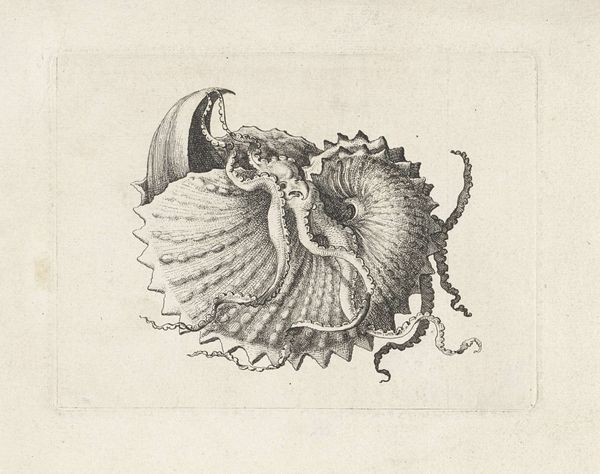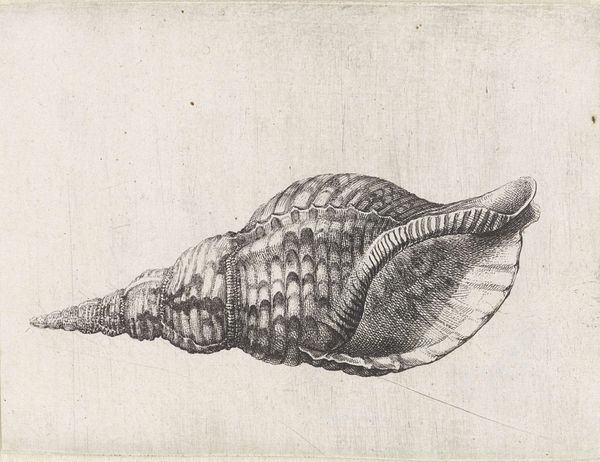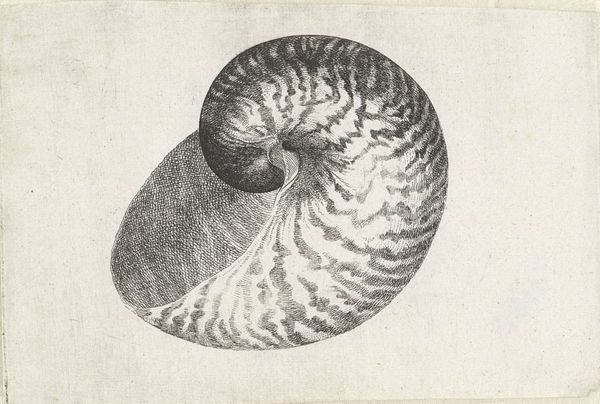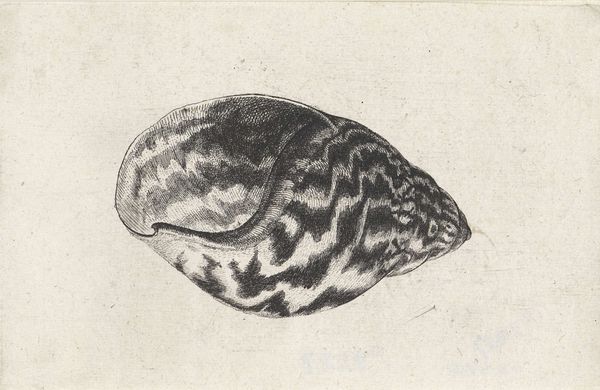
print, engraving
# print
#
engraving
#
realism
Dimensions: height 97 mm, width 148 mm
Copyright: Rijks Museum: Open Domain
This print of a shell, a cymatium parthenopeum, was made by Wenceslaus Hollar using etching, sometime in the 17th century. Hollar wasn't using traditional art materials like paint or clay. Instead, he took up copper and acid, common materials in industrial production. Look closely, and you'll notice the rich texture and fine detail. Hollar created this image by coating a copper plate with wax, then using a needle to draw the shell's design into the wax, exposing the metal. When the plate was dipped in acid, the drawn lines were etched into the copper. The plate was then inked and printed, transferring the image onto paper. This process allowed for the mass production of images, playing a role in burgeoning capitalism. The etched shell could be reproduced and distributed widely, contributing to the circulation of knowledge and visual culture, thus breaking the divide between craft and fine art.
Comments
No comments
Be the first to comment and join the conversation on the ultimate creative platform.
